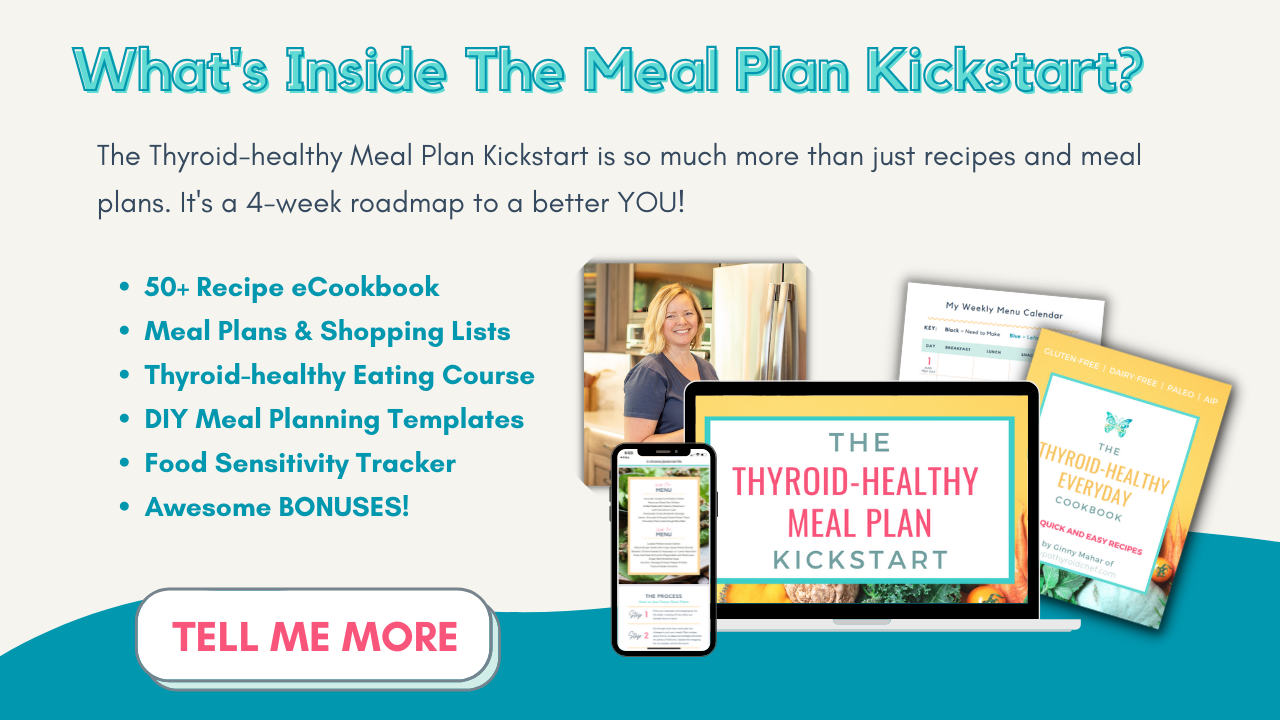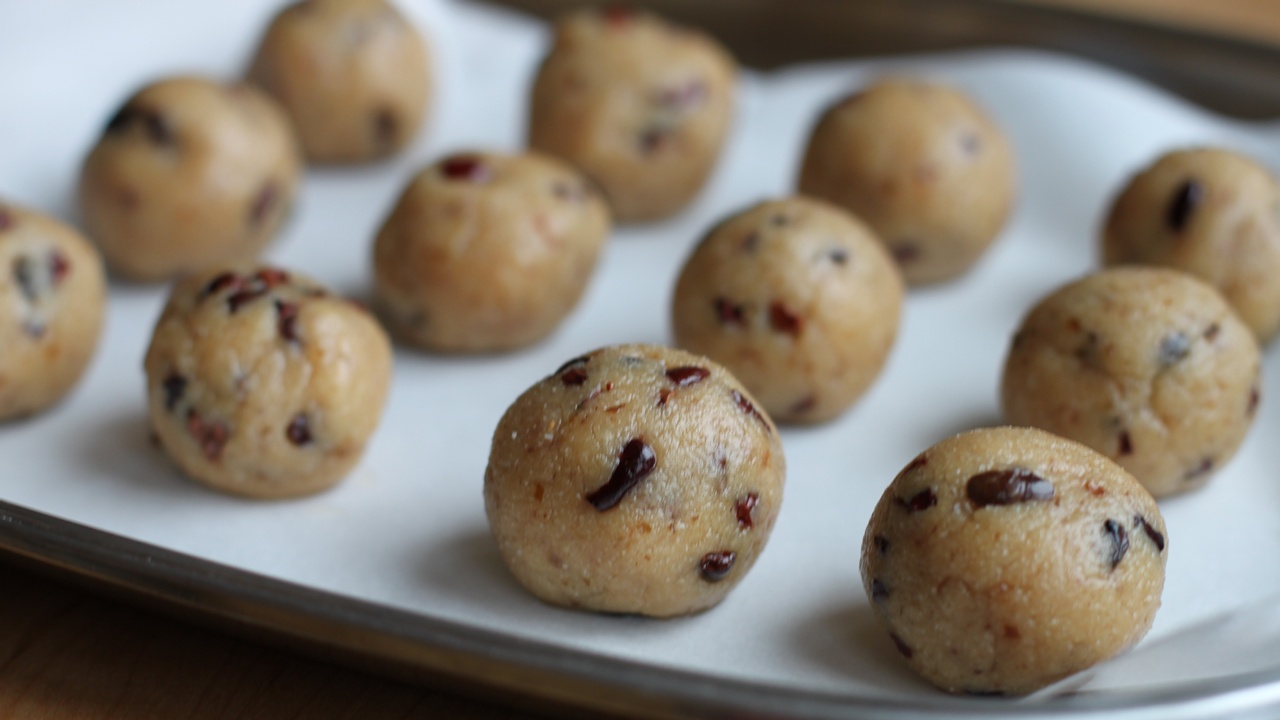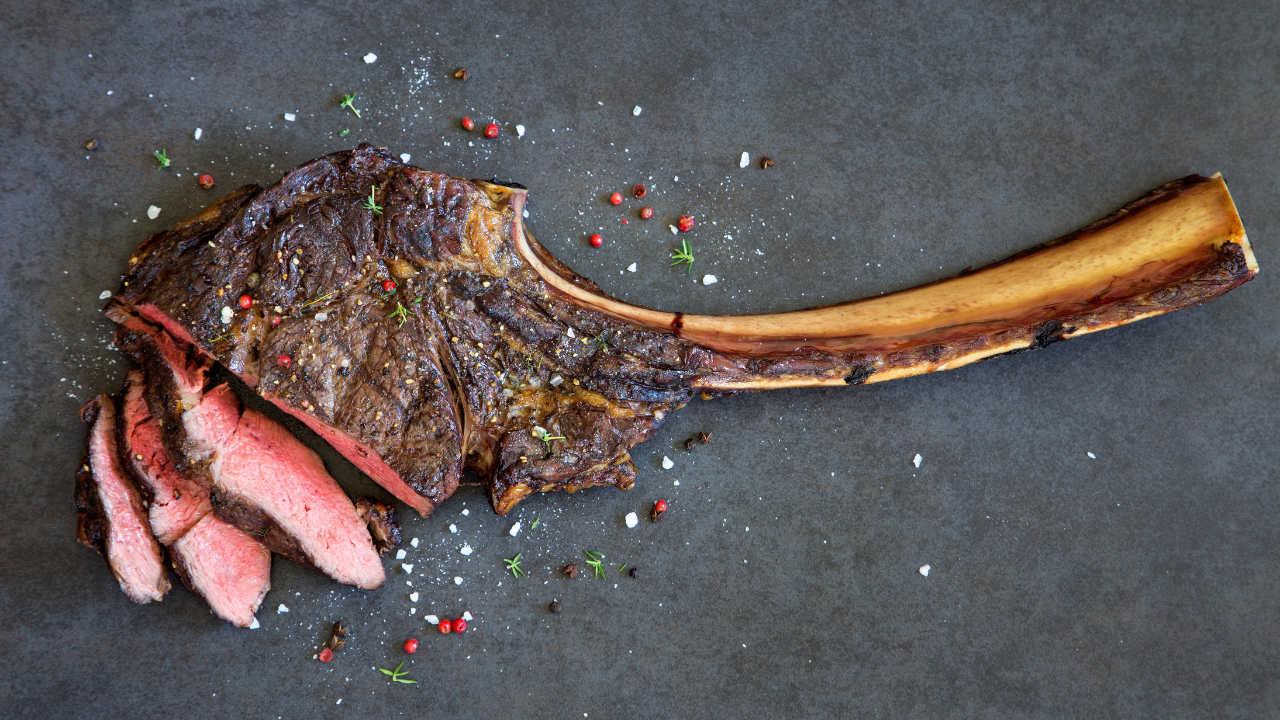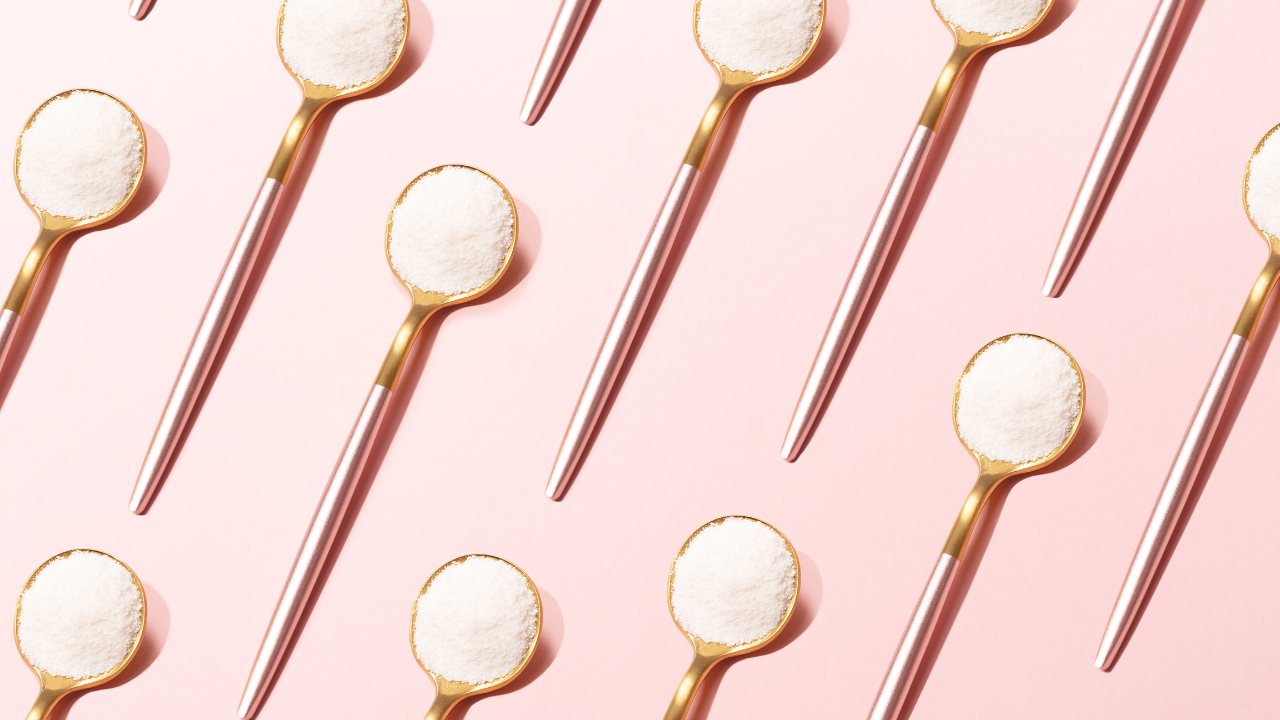Is Rice a Thyroid-healthy Food?
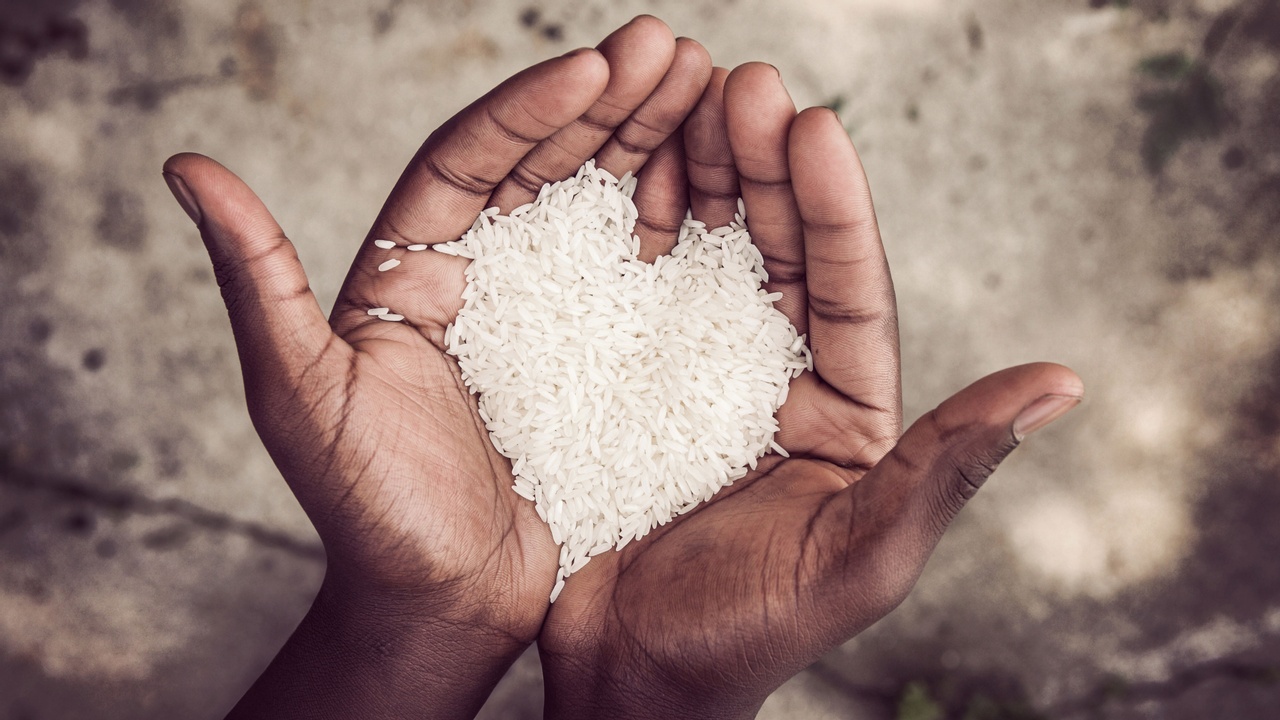
Rice can be a big problem solver. As thyroid patients who want to feel optimal, many of us are gluten-free, and when we’re navigating a gluten-free diet, rice can enable us to feel like we can go out to dinner and eat like a “normal” person. It can help us feed finicky kiddos (without relying on gluten). Its simplicity can soothe us when we’re sick and satisfy us when we’re hungry. Rice-based pasta can enable us to enjoy a beloved pasta dish that's just like the real thing. Rice-based flour blends can give us a way to keep baking grandma’s cookie recipe in a way that closely resembles the ones we remember. Rice is our go-to gluten backup plan...
...but what you may not realize is that rice has a dark secret, and as a thyroid patient, it's one you need to know about.
In this blog post and episode of the Thryoid-Healthy Bites Podcast, we'll unravel the truth about rice and its impact on thyroid health. Read, watch, or listen to the full story below to get empowered and ready to embrace a safe and thyroid-healthy approach to rice.
We'll Cover:
- What You Need to Know About Rice
- Why it Matters for Thyroid Patients
- 5 Tips to Enjoy Rice Safely
- Best Choices When Purchasing Rice
- Organic vs. Conventional Rice
- My Personal Approach to Cooking and Consuming Rice
- Nutrition Highlights of White Rice
Full disclosure: Some of the links in this post may be affiliate links. As an Amazon Associate, I earn from qualifying purchases. Purchasing a product using one of these links will support my work at no additional cost to you. Please know that I only recommend products I wholeheartedly stand by.
Disclaimer: This information is for educational and inspirational purposes only. Always consult with your doctor or other qualified healthcare providers before making changes to your diet, health care, or exercise regimen.
Show Notes:
- FREE Thyroid-healthy Grocery Guide
- Is Turmeric Good for Thyroid Thrivers?
- How Cilantro Can Help You Detox
- Is Tuna Thyroid-Safe?
Podcast Links:
- Listen on the podcast page
- Subscribe on iTunes
- Follow on Spotify
- Subscribe on YouTube
- Subscribe on Google Podcasts
- Subscribe on Amazon Music
- Listen on Stitcher
What You Need to Know About Rice
Don’t worry: I’m not going to cancel rice. As always, what you eat or don’t eat is up to you. But you’re here to get empowered, informed, and thyroid-healthy, and just like there are things you need to know about eating swordfish or tuna (for example), there are things you need to know about eating rice.
As always, I’m going to tell it to you straight, and I’m also going to share some solutions so that you can eat rice in the safest possible way. Let’s start with the bad news and get it over with.
The problem is this: heavy metals.
In all varieties of rice (including white, brown, and wild), heavy metals such as lead, arsenic, and mercury may be present. This is on account of the way rice grows in watery beds, which can expose the plants to a higher amount of heavy metals than other crops.
Across the globe, heavy metal pollution has made its indelible mark. The unavoidable reality these days is that our air, water, and soil contain heavy metals as a result of our dependence on fossil fuels, coal-fired power plants, agricultural chemicals, industrial chemicals, etc. Sadly, heavy metals in our air, food, and water is a byproduct of our modern existence.
Once released into the environment, heavy metals are impossible to remove. They last forever and are, therefore, impossible to avoid. Thus, those heavy metals have accumulated in our environment. Since rice is grown in water, it gets infused with whatever is in that water — good or bad.
When it comes to heavy metal avoidance and mitigation, knowledge is both power and protection. This is especially true for our thyroid, as heavy metal toxicity has been linked to thyroid dysfunction and autoimmunity, among other rampant health issues like cancer, autism, and Alzheimer’s.
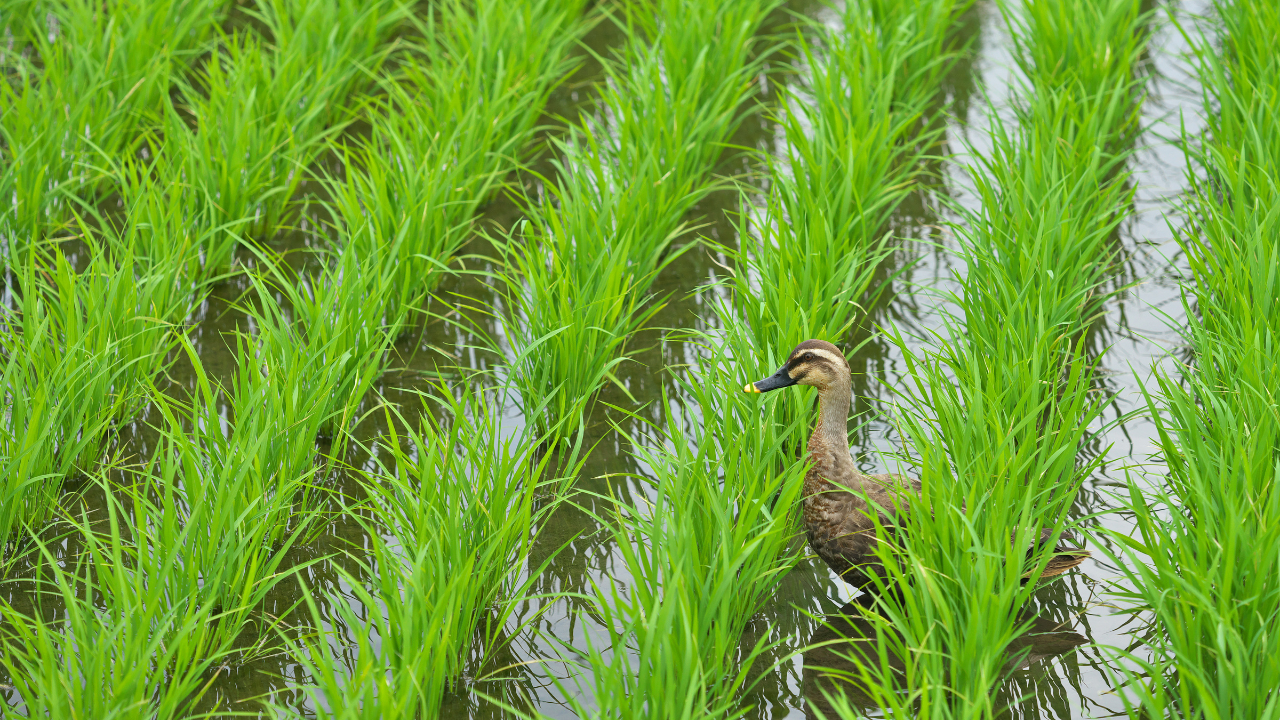
Why Heavy Metals Are Bad News for Thyroid Patients
Heavy metals set up camp in our tissues, where they get stored along with other toxins. This is especially true for our thyroid because the thyroid metabolizes things quickly; therefore, more toxins pass through it. Sometimes those toxins are so chemically similar to iodine (which is utilized by the thyroid to make thyroid hormone), that the thyroid absorbs them.
Additionally, studies have shown a direct link between mercury exposure and an increase in thyroid antibodies.
It's impossible to avoid heavy metals in our modern world completely. The key is to be aware of sources of heavy metal exposure. This includes using cautious moderation and best-choice practices in our consumption of foods that are vulnerable to heavy metals, including things like swordfish, tuna, and rice.
Further Reading: How Cilantro Can Help You Detox
5 Ways We Can Consume Rice Safely
1) Moderation: It’s especially easy for those of us who are gluten-free to depend a little too heavily on rice and rice products. Being mindful of how much rice we consume is a good idea.
2) Rinse your rice: According to research, one of the best ways to significantly reduce heavy metals in rice is to rinse it thoroughly before cooking. This has been shown to remove 50% or more of heavy metal residues. Alternatively, soaking your rice overnight as you would beans (and changing the water every few hours) is another way to reduce heavy metals. Note: Soaking your rice for hours will change the cooking time, but rinsing will not.
3) Use filtered water: Since even our tap water can be a source of heavy metals, filtering the water we use to rinse and prepare rice is a good idea.
4) Cook with lots of water: To further reduce heavy metals in rice, try boiling it in plenty of water as you would pasta. When tender and ready to eat, simply drain off the cooking water.
5) Choose your rice carefully: Many studies have been done on rice from around the world. While testing methods have produced varied results, one constant is that white basmati rice from California seems to be among the most consistently low in heavy metals, followed by white basmati from India and Pakistan.
Best Choices When Purchasing Rice
Historical data suggests that California rice is lower in heavy metals than rice grown in the southern United States because of chemicals used in cotton farming across the South. Back in the day, lead-arsenate insecticides were used to battle the boll weevil. They were banned in the 1980s, but their heavy metal legacy lives on in the southern soil, where half of U.S. rice is grown.
If you’re looking for a safe bet, California’s Lundberg Farms, in particular, has taken measures to address and monitor heavy metals in their rice farming. I find their transparency admirable, refreshing, and especially useful as a thyroid patient trying to make mindful food choices.
What about organic rice?
The “organic” label will protect you…but only in the long run.
One interesting finding is that organic rice did not show lower levels of heavy metals. Since heavy metal pollution is systemic, there’s no way of keeping groundwater free of it, so buying organic, in this case, is not a reliable way to avoid arsenic.
That said, buying organic is encouraged as a thyroid-healthy practice for several reasons. It's more environmentally friendly and does far less to contribute to our worsening heavy metal pollution. So, buy organic whenever possible, and know that it's helping all of us reduce our heavy metal load in the long run, but it can’t be relied upon to avoid heavy metals in your rice today.
How I Cook and Consume Rice at Home
First, what works for me may not be right for you. We all have our own set of circumstances, needs, and sensitivities that come into play when making dietary choices. As a rule, I try not to rely too heavily on any one staple and focus instead on the widest dietary variety possible.
It’s not a mainstay, but rice and wild rice are present in my current thyroid-healthy diet, and yes, more so since I’ve eliminated gluten. My family and I eat and enjoy white, brown, and wild rice in moderation.
At home, when my family is eating something that's accompanied by white rice, like curries or stir-fries, I often cook up a bag of frozen organic cauliflower rice for myself instead. Still, I appreciate the real thing once in a while, and eating some rice enables me to do things like travel, dine out, and socialize more easily. That food freedom is important, and I choose to take it where I can get it.
That said, I experience much less brain fog when I keep my consumption of gluten-free grains below a certain threshold. Eliminating them entirely doesn't feel necessary or worth it to me at this time. Instead, I use moderation and some of the tactics I listed above to reduce heavy metal exposure.
My favorite rice and rice-based products:
As a family, most of the rice we buy is organic white basmati or jasmine rice from Lundberg Farms. We always rinse our rice in a fine-mesh strainer for 2 or more minutes, prior to cooking.
We occasionally eat some rice-based products, like gluten-free bread or pasta. On pasta night, I might whip up zoodles or spaghetti squash for myself while the boys have their pasta. But I also appreciate the ability to occasionally enjoy my favorite brown rice-based gluten-free pasta from Jovial, which is shockingly similar to the real thing. My whole family enjoys it and doesn't notice the difference. Sometimes, it's nice to boil just one pot of pasta!
While my baking endeavors typically fall into the Paleo (i.e., grain-free) category, I occasionally use a rice-based gluten-free flour blend for a batch of huckleberry pancakes or cookies that taste more ‘traditional.’ Like our favorite rice-based pasta, this is a good compromise when I want to bake something the whole family can enjoy. Plus, because my son has a tree nut allergy, paleo baked goods, which often rely on nut flours, are off-limits for him.
Are my heavy metals high from eating some rice?
No. I have done several HTMA (hair tissue mineral analysis) tests without seeing any increases in heavy metals. In fact, I've seen decreases because I follow the tips and guidelines listed above, cook with and drink filtered water, and regularly incorporate foods that support the body’s ability to rid itself of heavy metals, like turmeric and cilantro.
All in all, I feel safe eating and feeding my family some rice and rice products because we use moderation and the safest practices in preparing them.
Further Reading: Is Turmeric Good for Thyroid Patients?
Thyroid-healthy Nutrition Highlights of White Rice
White rice has a reputation for being unhealthful and lacking nutrients. It's also high in carbohydrates and low in protein. Some white rice is enriched with additional nutrients, so check the label to know what you're buying. NOTE: The organic white basmati I recommend from Lundberg Farms is not enriched.
Nutrient density is a key tenet of thyroid-healthy eating, and while I wouldn't describe white rice as being nutrient-dense, it does contain some key thyroid-supporting nutrients.
Key thyroid-supporting nutrients in white rice:
- Selenium helps us convert thyroid hormones, can lower thyroid antibodies, and also helps protect the thyroid from heavy metals.
- Resistant starch is a powerful gut-health supporter, especially for the large intestine. Note: The resistant starch in white rice increases significantly after it has been cooled and reheated.
- Zinc is crucial to proper thyroid hormone conversion and metabolism.
- B vitamins, including thiamine and niacin, can help boost low energy and are commonly deficient amongst thyroid patients.
One 3.5-ounce serving of white rice* contains:
- Calories: 123
- Fat: < 1 g
- Sodium: 17 mg
- Carbohydrates: 30 g
- Dietary fiber: < 1 g
- Resistant starch: 3.7g*
- Protein: 2.9 g
- Vitamin B6: 8% RDI
- Manganese: 18% RDI
- Thiamine: 5% RDI
- Niacin: 12 % RDI
- Magnesium: 2% RDI
- Copper: 4% RDI
- Phosphorus: 6% RDI
- Folate: 1% RDI
- Selenium: 13% RDI
- Iron: 1% RDI
- Zinc: 2% RDI
*Data is for unenriched white rice.
In Conclusion
Whether or not to eat rice, or how often, is a personal choice. As always, it's important to do what works for your unique body and make the best-informed choices possible with the help of reliable information and your healthcare team.
I hope this article has informed and empowered you to do just that. In the future, if you decide to make and enjoy a pot of rice, you now know which rice is best to consume and how to prepare it in order to minimize any health risks. That's what making thyroid-healthy choices is all about!
Happy cooking, happy thriving, and enjoy!

P.S. If you're anything like me, when I started down the path of thyroid-healthy eating I had questions-- lots of them. What I didn't have was a step-by-step system, to get me where I wanted to go. I wasted a lot of time piecing together bits of information about what to eat, what to avoid, and HOW to make thyroid-healthy dietary changes. That’s why I created the Thyroid-healthy Meal Plan Kickstart. Ready to take YOUR healing journey farther, FASTER? Let’s do it. Learn more HERE.
More Featured Ingredient Deep Dives:
- Beef: Is it Thyroid-Healthy?
- 5 Reasons Alcohol is Problematic for Hypothyroidism
- Are Potatoes Thyroid-Healthy?
- Tuna: Is it Thyroid-Safe?
- Is Seaweed a Thyroid-Healthy Food?
- Is Ginger Good for Thyroid?
Sources:
- https://www.forbes.com/sites/carolynrosenblatt/2018/08/07/we-can-control-one-of-the-likely-causes-of-alzheimers-disease/?sh=5503004f1821
- http://www.huffingtonpost.com/maria-rodale/whats-behind-the-secret-e_b_2915186.html
- https://www.sciencedirect.com/science/article/pii/S0160412011002716
- https://pubmed.ncbi.nlm.nih.gov/29363749/
- https://foodrevolution.org/blog/arsenic-in-rice/
- https://www.lundberg.com/arsenic-in-food
- https://pubmed.ncbi.nlm.nih.gov/14522731/
- https://www.healthline.com/nutrition/is-white-rice-bad-for-you
Subscribe to my free newsletter for fresh recipes & lifestyle tips, delivered weekly, and receive a free gift!
By submitting this form, you agree to receive ongoing updates from Hypothyroid Chef




